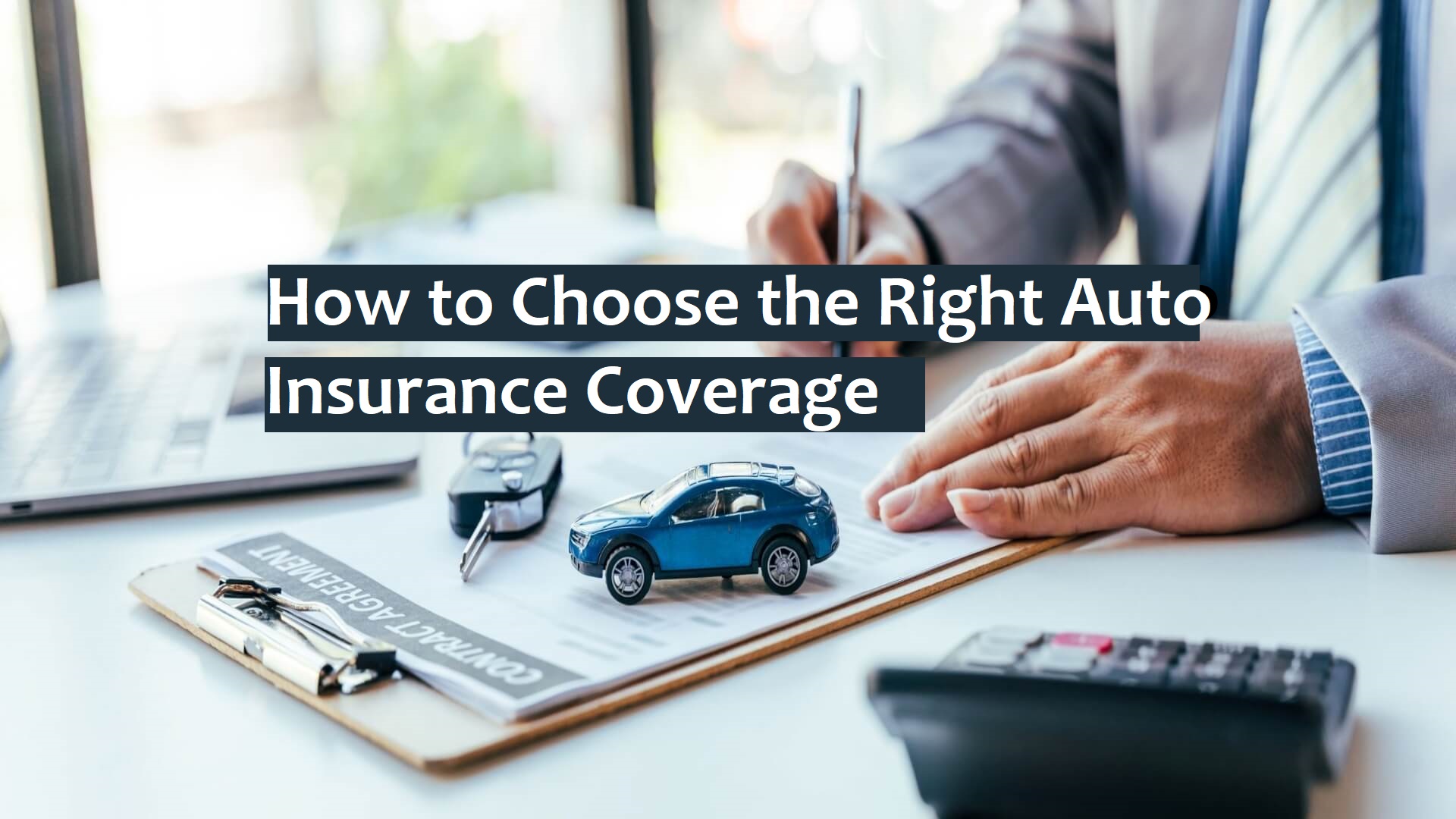Auto insurance is a crucial part of responsible car ownership. It not only protects your vehicle and finances in the event of an accident but also ensures compliance with the law. However, with so many coverage options, providers, and policy terms available, selecting the right auto insurance coverage can be overwhelming. This comprehensive guide will help you understand the essentials of auto insurance, identify your coverage needs, compare policies, and make an informed decision.
What Is Auto Insurance?
Auto insurance is a contract between you and an insurance company. In exchange for regular premium payments, the insurer agrees to cover specific types of financial loss or damage resulting from car accidents, theft, or other covered events. It typically includes several types of coverage, each designed to protect you, your vehicle, and other parties involved in an incident.
Why You Need Auto Insurance
Auto insurance is essential for several reasons:
- Legal Requirement: Most states in the U.S. require at least a minimum amount of liability coverage.
- Financial Protection: Accidents can lead to high repair costs, medical bills, or lawsuits.
- Peace of Mind: Insurance allows you to drive confidently, knowing you’re protected.
- Loan or Lease Compliance: If your car is financed or leased, full coverage may be required.
Key Types of Auto Insurance Coverage
Understanding different types of auto insurance is the first step in selecting the right policy:
1. Liability Coverage
- Bodily Injury Liability: Covers medical costs, lost wages, and legal fees if you injure someone in an accident.
- Property Damage Liability: Covers the cost of damage to another person’s property, such as their vehicle or fence.
Most states mandate a minimum liability coverage, but it’s often wise to purchase more than the legal minimum.
2. Collision Coverage
Pays for repairs or replacement of your vehicle if it’s damaged in a collision, regardless of fault.
3. Comprehensive Coverage
Protects your car from non-collision-related damages such as:
- Theft
- Vandalism
- Fire
- Natural disasters
- Falling objects
- Animal collisions
4. Personal Injury Protection (PIP)
Covers medical expenses and lost income for you and your passengers, regardless of who is at fault.
5. Uninsured/Underinsured Motorist Coverage
Protects you if you’re hit by a driver who has no insurance or insufficient coverage.
6. Medical Payments Coverage (MedPay)
Pays for medical expenses for you and your passengers after an accident, regardless of fault. It’s typically available in non-PIP states.
7. Gap Insurance
Covers the difference between your car’s actual cash value and what you still owe on a loan or lease if the car is totaled.
8. Roadside Assistance and Rental Reimbursement
Optional add-ons that cover towing, battery jumps, flat tires, and provide funds for a rental car if your vehicle is in the shop.
Assessing Your Auto Insurance Needs
To choose the right auto insurance coverage, assess your unique situation:
1. Know Your State Requirements
Each state has different minimum liability requirements. Visit your state’s DMV website or speak with an insurance agent to understand what’s mandatory.
2. Evaluate the Value of Your Vehicle
- New or Expensive Vehicles: Consider full coverage (collision + comprehensive).
- Older Vehicles: You might opt for liability-only if the car’s value is low.
3. Determine Your Risk Level
Factors include:
- Driving habits
- Commute distance
- Location (urban areas often have higher risks)
- Accident history
4. Review Your Budget
Balance between premium costs and out-of-pocket expenses (deductibles). A higher deductible usually means a lower premium, but more upfront cost in an accident.
5. Consider Your Financial Assets
Higher liability limits protect your assets in case of a lawsuit.
How to Compare Auto Insurance Policies
When shopping for auto insurance, comparison is key. Here’s how:
1. Use Online Comparison Tools
Websites like NerdWallet, Policygenius, and The Zebra allow you to compare quotes from multiple insurers in minutes.
2. Check Company Ratings
Use sites like J.D. Power, AM Best, and the Better Business Bureau to assess insurer reliability, customer service, and financial strength.
3. Read the Fine Print
Understand exclusions, limits, and conditions of each policy. What’s covered and what’s not?
4. Ask About Discounts
Insurers often offer discounts for:
- Safe driving records
- Bundling policies (home + auto)
- Anti-theft devices
- Good student status
- Defensive driving courses
5. Request Personalized Quotes
Prices can vary based on individual circumstances. Provide accurate info for precise quotes.
Tips for Choosing the Right Coverage
- Don’t Choose Based on Price Alone: A cheaper policy may offer less protection.
- Customize Your Coverage: Tailor your policy to reflect your vehicle, lifestyle, and financial situation.
- Review Your Policy Regularly: Life changes like buying a new car, moving, or adding a driver can affect your needs.
- Talk to an Independent Agent: They can offer unbiased advice and access to multiple insurers.
Common Mistakes to Avoid
- Underinsuring to Save Money: This can cost you more in the long run.
- Ignoring Deductibles: Make sure you can afford your deductible if you file a claim.
- Not Updating Your Policy: Always update your insurer with new information (e.g., address, new drivers).
- Missing Out on Discounts: Ask what’s available—you might qualify for more than you think.
The Role of Auto Insurance in Financial Planning
Auto insurance is more than a legal formality; it’s an integral part of your overall financial plan. Adequate coverage can protect you from:
- High medical bills
- Costly vehicle repairs
- Lawsuits
- Financial instability following an accident
Having the right auto insurance supports long-term financial health and peace of mind.
Final Thoughts
Choosing the right auto insurance coverage involves understanding the different types of coverage, evaluating your personal needs, comparing multiple policies, and avoiding common pitfalls. Whether you’re a new driver or reviewing your current policy, taking a thoughtful approach ensures you get the best protection for your money.
Remember, the best policy isn’t always the cheapest—it’s the one that gives you confidence and covers your real-world risks. Take the time to assess your situation, ask questions, and make informed choices. Auto insurance is your safety net on the road—make sure it’s strong.
If this article was informative also checkout: Common Insurance Terms




